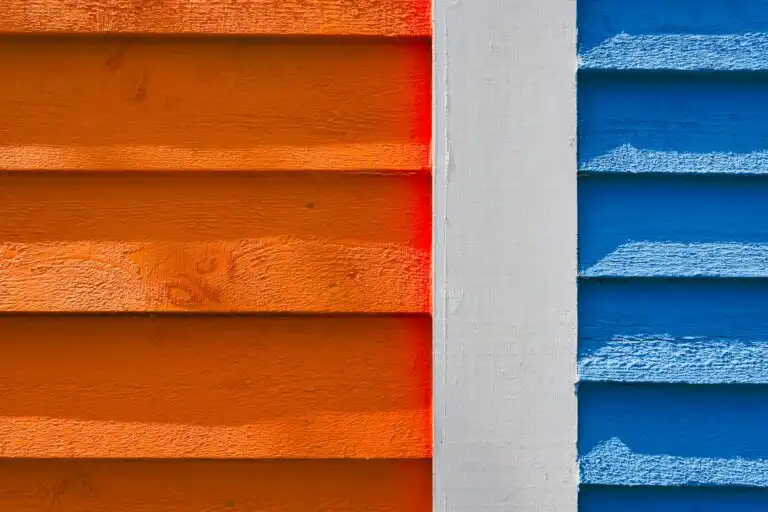Siding serves as the first line of defense for your building, protecting it from the elements while adding aesthetic value. Over time, even the highest-quality siding will show signs of wear and tear. Recognizing these signs early can save you time and money, and help maintain the value of your property.
Visible Damage And Deterioration
Over time, siding can show visible signs of wear and tear that indicate the need for an upgrade. Here are common signs to look for:
- Cracks and Splits: Cracks and splits in the siding are clear indicators of aging and damage. They can allow moisture to penetrate, leading to further damage to the structure beneath.
- Warping and Buckling: Warping and buckling can occur due to exposure to extreme weather conditions. This not only affects the appearance but also compromises the protective barrier of the siding.
- Fading and Discoloration: Fading and discoloration occur naturally over time due to sun exposure. When siding loses its color, it not only looks unattractive but may also indicate the material’s protective layers have deteriorated.
- Blisters and Bubbles: Blisters and bubbles under the surface of the siding suggest water trapped beneath the siding. This indicates serious moisture problems that need immediate attention.
Identifying these visible signs allows you to address the problem before it leads to more severe structural issues.
Increased Maintenance And Repairs
Consistently maintaining and repairing siding can be both time-consuming and costly. Recognizing when your siding requires frequent attention is crucial:
- Frequent Painting: If your siding needs frequent repainting, it could indicate that the material is failing. Quality siding should hold paint for at least 8-10 years. Peeling or chipping paint is a sign that the siding may need replacement.
- Regular Patching: Constantly having to patch up holes or cracks is another red flag. While minor repairs are normal, frequent patching indicates that the siding is no longer providing adequate protection.
- High Maintenance Costs: Increased maintenance costs are a clear sign that the siding is nearing the end of its lifespan. When repair costs start to exceed the cost of new siding, upgrading becomes the more economical choice.
- Wear on Insect-Repellent Siding: Siding that shows signs of rodent or insect damage needs replacing. Many modern sidings have insect-repellent properties, and if pests have penetrated, the integrity of the siding has likely been compromised.
By identifying these maintenance issues early, you can decide when it’s time to invest in new siding, thus protecting your building and saving on long-term costs.
Energy Inefficiency
Old or damaged siding can significantly impact your building’s energy efficiency. When siding becomes compromised, it fails to provide adequate insulation, leading to increased energy costs and decreased indoor comfort.
- Higher Energy Bills: If you notice a sudden spike in energy bills, your siding could be the culprit. Damaged or outdated siding tends to let in more outside air, forcing your HVAC system to work harder to maintain indoor temperatures.
- Uneven Indoor Temperatures: Are some rooms in your building colder or hotter than others? This uneven temperature distribution often points to poor insulation. Effective siding should provide a consistent barrier that helps regulate internal temperatures.
- Drafts Near Walls and Windows: Feeling drafts around walls, windows, or electrical outlets is another clear indication of failing siding. Drafts are a result of gaps or cracks in the siding that allow outside air to enter.
Upgrading to modern, energy-efficient siding can help reduce these issues, leading to lower energy costs and improved comfort for residents.
Moisture And Mold Issues
Moisture intrusion is one of the most severe problems caused by failing siding. Recognizing the signs of moisture-related issues can prevent significant structural damage and health hazards.
- Mold Growth: Mold thrives in damp environments and can quickly spread if your siding is compromised. Look for black, green, or white patches along the siding or inside the building. Mold not only damages building materials but also poses health risks to tenants.
- Peeling Paint: Paint that consistently peels or bubbles up is often a sign of moisture trapped within the walls. This happens when water gets behind the siding, causing the paint to lose its adhesion.
- Water Stains: Visible water stains on interior walls or ceilings indicate that water is penetrating the siding and affecting the building structure. These stains are often brown or yellowish and should be addressed immediately to prevent further damage.
- Rotting Siding: Wooden siding is particularly susceptible to rot when exposed to moisture over a long period. Rotting siding loses its strength and can no longer protect the building effectively. It often appears darker than the surrounding material and feels soft to the touch.
Identifying these moisture and mold issues early allows for prompt repairs or a complete siding upgrade, protecting the integrity of the building and the well-being of its inhabitants.
Conclusion
Recognizing the signs that your multi-family building needs a siding upgrade is crucial for maintaining its overall health and appearance. Visible damage, increased maintenance, energy inefficiency, and moisture-related issues all indicate that it may be time for new siding. Addressing these problems promptly can save you from costly repairs and enhance the living environment for your residents.
Our professionals at Matrix Construction Services are skilled in identifying and addressing all types of siding issues. We offer comprehensive wall repair services in Austin tailored to meet the specific needs of multi-family buildings.
Don’t wait for minor issues to become major problems. Contact us today for a consultation and ensure your building remains in optimal condition for years to come.



